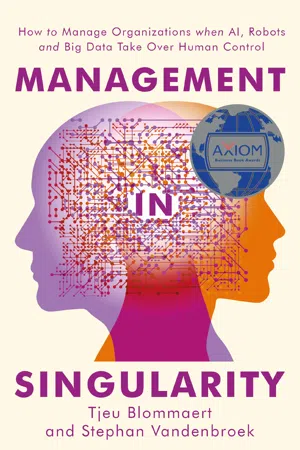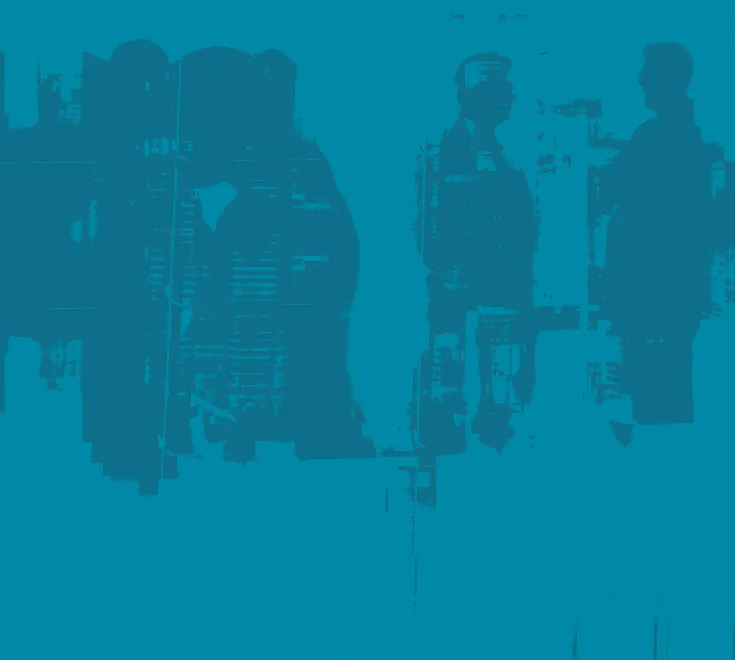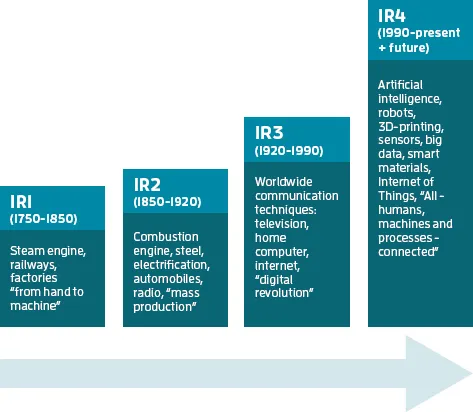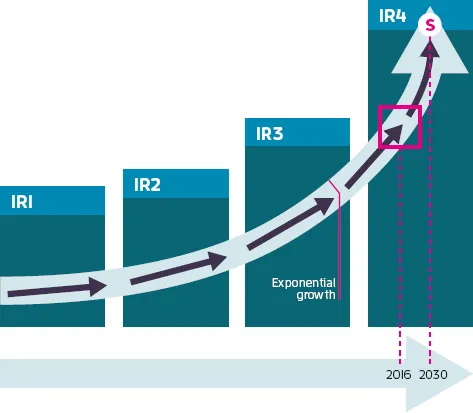![]()
1
We do know now
that there is a lot more
we do not know
than we do know
![]()
Soon we will enter a stage wherein we all will be intensively ‘guided’ by visible and invisible robots. E.g., the selfdriving car is already taking over the steering wheel. In manufacturing, robots take over dangerous and labor-intensive jobs. In healthcare robots become smart assistants, e.g., help dressing patients, distribute pills, perform standards tests, and clean up beds and rooms. In logistics, drones will take care of the delivery of packages. As singularity may become near, the question is: How do you as a manager anticipate this? Hiding or burying your head in the sand is no longer an option. Therefore, let us try to build up some contours of a future wherein Singularity develops.
Science is the discovery of the unknown. Despite our state of the art high-tech measurement systems, we know the actual energy density in the universe must deviate some 10118 from what our current measurement systems tell us (CERN, 2015). Our current knowledge about all the mass surrounding us is likely a low 5% of what there is to know; the proverbial ‘Known Unknown’. Some people do not like to open this window of their mind; they prefer to continue life in a state of blessed ignorance. However, many scientists, researchers and practitioners are undauntedly trying to take away the cover from the enormous area of ‘known unknowns’, the vast white spots in our knowledge base. Big Data environments and supercomputers programmed with smart algorithms and artificial intelligence (AI) are committed to explore and exploit that vast unknown field. The development of the ‘Internet of Things’ may be a big help here. Machines, robots, satellites, drones, people, animals, many things, are all connected by using embedded software and digital sensors. This makes real-time processing and real-time exchange of data possible: 24 hours a day, 7 days a
We enter a stage where we as humans do no longer understand how robots really operate. That stage is called ‘singularity’ or ‘transcendence’.
week and 365 days a year. Whether in business or at home, smart tablets and phones are used as platforms to receive those data and pave the way for real-time decision making and its successive actions. The use of AI to program robots will make the robots ‘self-learning and self-adjusting’. Ultimately this will lead to a stage where a robot writes its own next improved program. Along this way, we may enter a stage where we as humans do no longer understand how robots really operate. That stage is called ‘singularity’ or ‘transcendence’. Some researchers claim we will already enter that stage around 2030-2035, some 15-20 years to go!2
But what will happen on the way to Singularity. What will be the consequences for our personal life, management, and business?
But what will happen along the way, and what will be the consequences for our personal life, management, and business? Let us try to create some perspectives for the near future.
We have lived through three Industrial Revolutions. Concisely, the first revolution was about the steam machine, the second about the combustion engine and electricity, and the third configured a digital world around us. With the ‘Internet of Things’ and ‘Artificial Intelligence’ we have now entered the fourth Industrial Revolution. And, this fourth revolution is all about digital connections using embedded software, sensors, Bluetooth®, Wi-Fi, etc. and about self-programming machines, vehicles and robots. It is our premise that we have only taken the first small steps into that new fourth revolution.
At the end of each chapter we have added a couple of questions under the title ‘Management considerations’. To reflect on the chapter, but especially as a guidance to initiate a discussion within your own organization or management team. You will probably not be able to provide a straight answer to several of these questions, but hopefully they will make you start thinking and they will help you building further awareness. We firmly believe that ‘awareness’ is the first and crucial step to take.
With the ‘Internet of Things’ and ‘Artificial Intelligence’ we have now entered the fourth Industrial Revolution. And, this fourth revolution is all about digital connections using embedded software, sensors, Bluetooth®, Wi-Fi, etc. and about self-programming machines, vehicles and robots.
2See e.g. Kurzweil (2013), Brynjolfsson & McAfee (2014) and Hawking et al. (2014).
![]()
Management discussion
As management, do you have a common perspective on Singularity?
Is your organization relatively seen more or less sensitive for singular developments? Why?
Would you as management like to know more about the business (e.g. on the purchase behavior of current customers, non-customers, customers-of-the-customers, suppliers and (potential) competitors)? How could this ‘information need’ be resolved within the 4th Industrial Revolution along the way to Singularity?
![]()
2
Singularity is
much closer than
you may think
![]()
To actually arrive at Singularity during this century, a serious exponential growth in the speed of scientific progress is required. However, we are living in a period in which such acceleration can be witnessed objectively. Just take a look around you; all sciences, be it healthcare, physics, materials, chemistry, electronics, or biology, currently undergo substantial and fundamental changes. These developments seem to progress faster and faster. This is not only a perception: it is the new reality we live in!
It is questionable when the Fourth Industrial Revolution actually started; but somewhere, somehow an early signal of this timeframe can be traced back into the 1960s-1970s. Figure 2.1 depicts where we currently are on our way to Singularity.
The Fourth Industrial Revolution can be more or less divided into two halves: the period until 2015 (1st half) and the period thereafter (2nd half). The fundamental observation is that the speed of technological developments and changes increases over time. The growth in the second half is exponential while growth in the first halve was more or less linear. It does not only look like things are changing faster and faster, they really do!
The Fourth Industrial Revolution can be more or less divided into two halves. The growth in the second half is exponential while growth in the first halve was more or less linear.
This is called ‘The phenomenon of the second half’. For instance, it takes 48 minutes (first and second half together) to fill a soccer stadium up to the roof with an exponential row of water droplets. But it takes 42 minutes to fill the first half and only six minutes to fill the second half of the stadium.
That really is the effect of exponential growth, also called asymptotic growth (1, 2, 4, 8, 16, 32, 64, 128, 256, etc.) with a huge impact in the end.3 Although the growth rate is already increasing, we have perceived a quite stable development during the first half, and we are able to predict the future relatively easy. We can use plans and budgets, Key Performance Indicators (KPIs), benchmarking, quarterly reporting, etc. And, one person in the organization (often the owner or CEO) may give orders that must be followed up. Being ‘in control’ in this first half is typically a matter of ‘keeping things on track’. However, in the second half things are changing so fast that plans and budgets may become impaired soon after they have been developed. Organizations simply cannot predict and create the future on their own as easily as they may have done in the past. They are part of an ecosystem (suppliers, customers, universities, research institutes, etc.) where they or other members might disappear overnight because of disruptive actions from others.
The concept of ‘In C...








